Cold Brew Vs Espresso All the Differences You Need to Know

Iced Americano vs. Cold Brew What Are the Differences?
Extracting espresso. Photo by Blake Verdoorn. Espresso is prepared in a completely different way than Cold Brew. Espresso calls for finely ground dark-roast coffee tightly packed into a puck where highly pressurized and extremely hot water is forced through. The coffee-to-water ratio usually is 1 part coffee to 2 parts water and serving sizes are between 1 and 2 ounces.
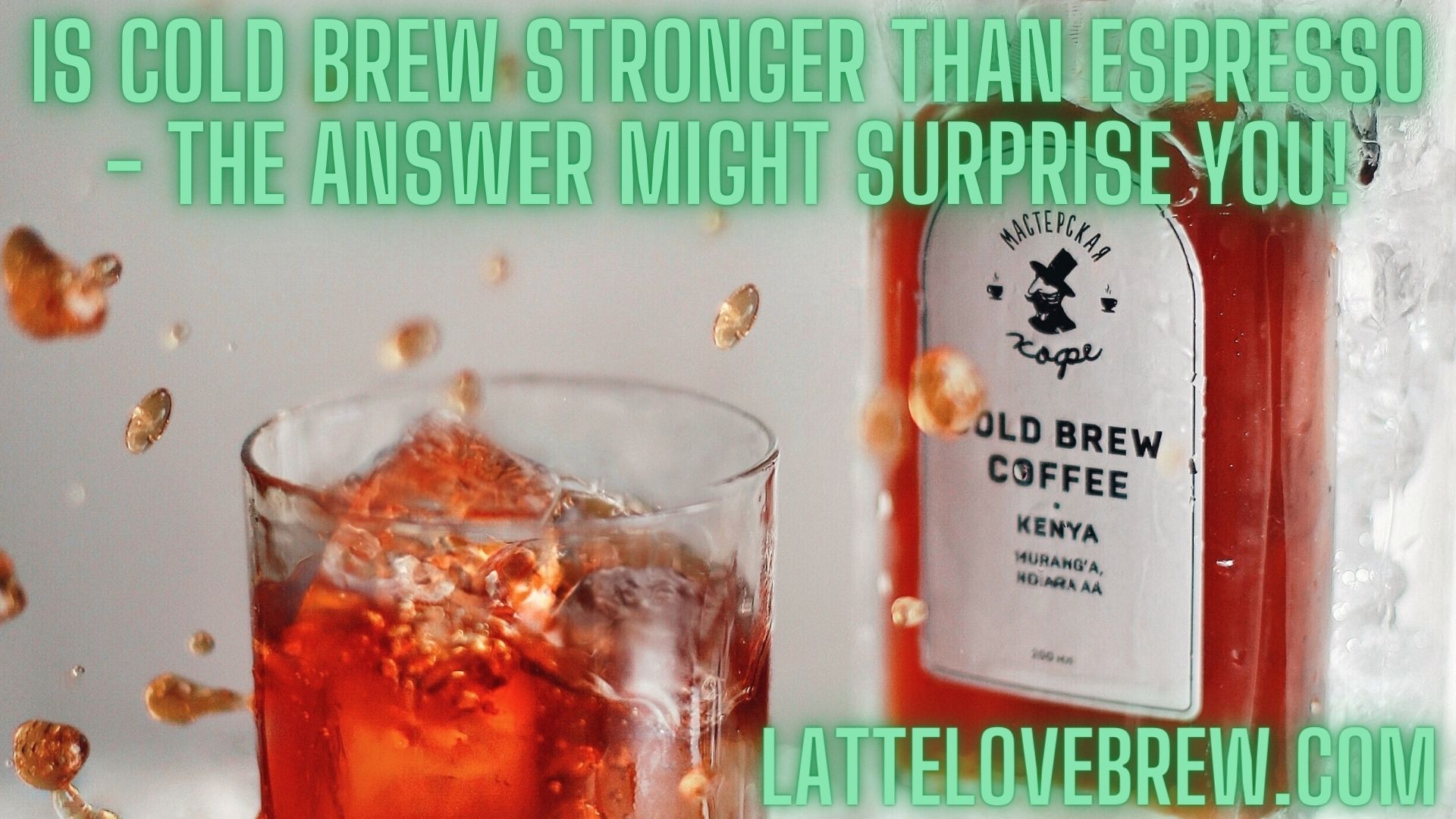
Is Cold Brew Stronger Than Espresso The Answer Might Surprise You
Often a favorite among cold coffee lovers in the summer, cold brew coffee is used as the base for various iced coffee beverages. Meanwhile, the brewing time of an espresso is just 25 to 30 seconds, yet the actual caffeine content per 100ml of coffee is much higher than that of a cold brew. A cold brew coffee is a slow burn, while the espresso.
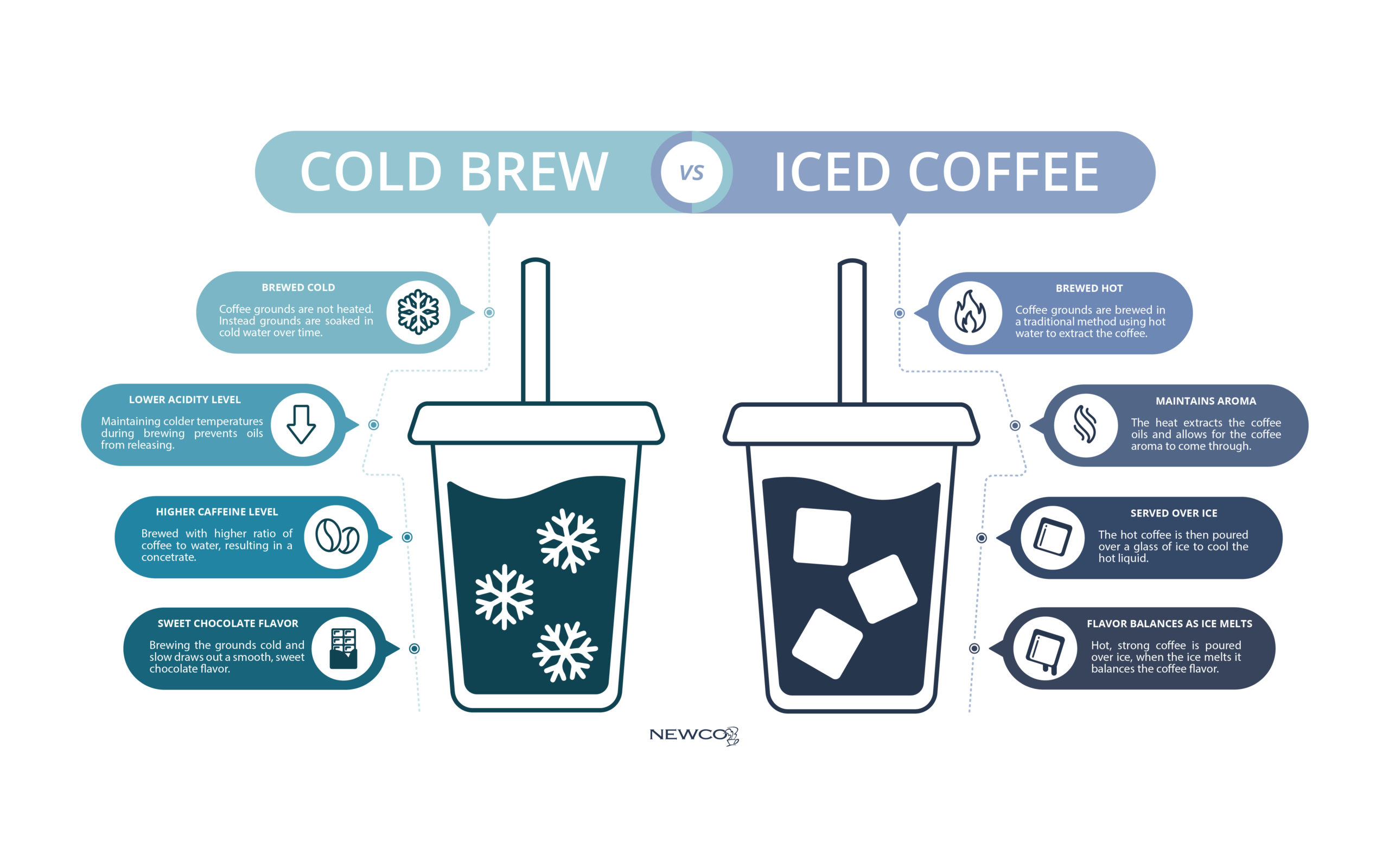
Cold Brew vs. Iced Coffee Newco Coffee
Cold brew concentrate ranges between 4 and 6% TDS, while espresso ranges between 7.5 and 12% TDS. Cold brew is less bitter and has delicate notes that cannot survive heat. Unlike cold brew, espresso extracts acidic and bitter flavors from the coffee beans, resulting in a thick consistency and vivid flavors.
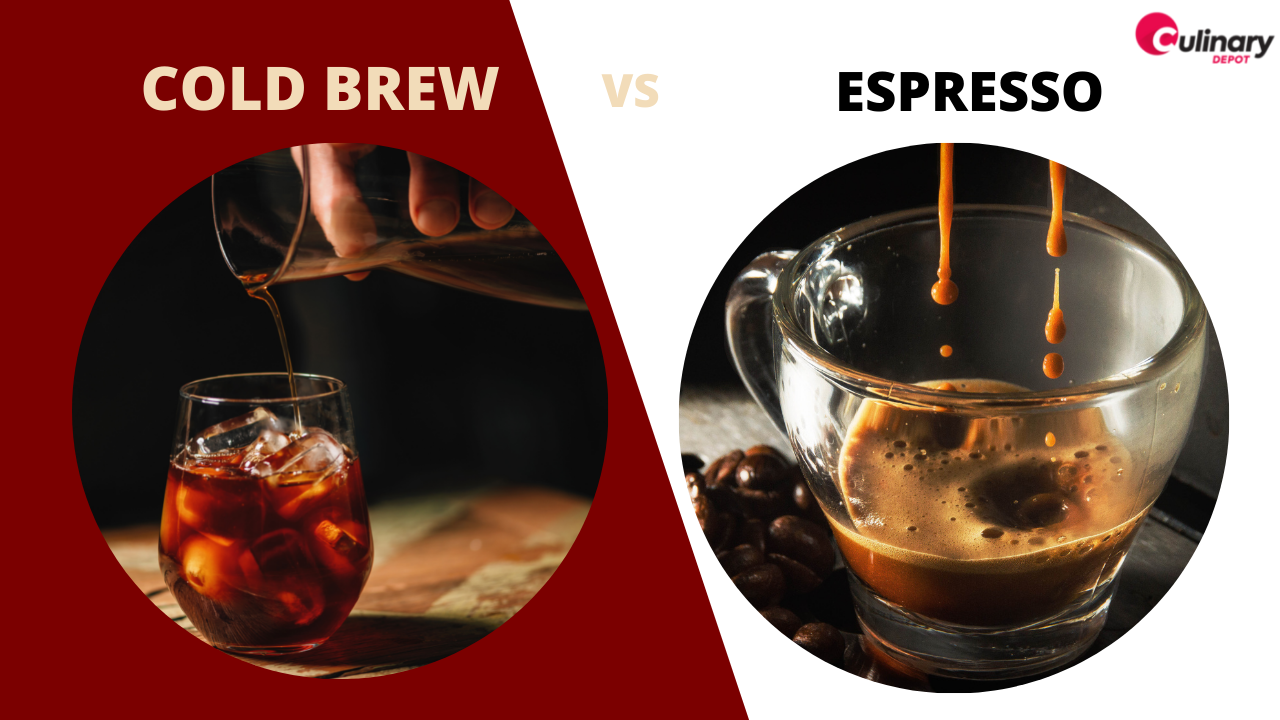
Cold Brew vs Espresso The Difference Culinary Depot
Espresso and Cold Brew are unique beverages. If you're looking for an immediate cup, espresso is the better choice as it takes mere seconds to brew. Cold Brew on the other hand takes up to 24 hours to brew. It is made using a coarse grind in small batches. Additionally, the taste and acidity are very different.

Cold Brew vs Iced Coffee vs Hot Brew vs Espresso Cold Press Coffee
Espresso is made by forcing hot water through coffee grounds, while cold brew is made by steeping coffee grounds in cold water for a long time. The two methods produce coffee with different flavors, with espresso having a bold, rich taste and cold brew generally having a smoother, less acidic flavor. Additionally, espresso is typically served.
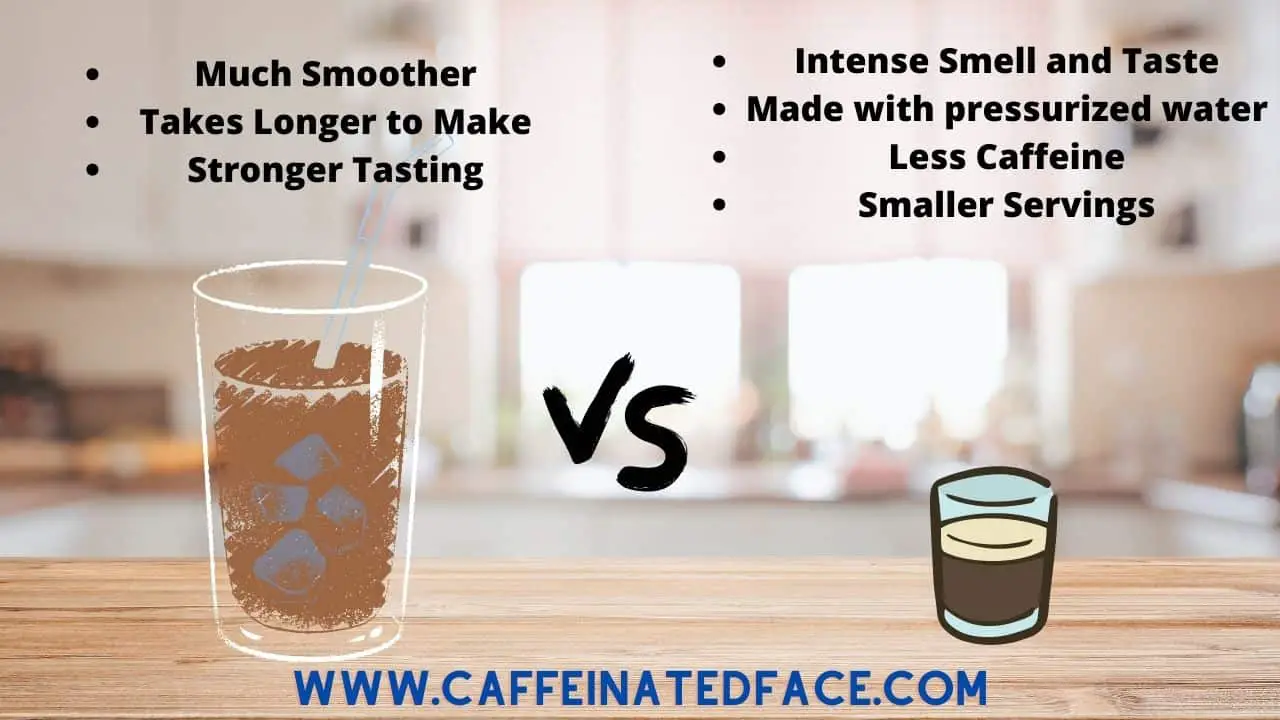
Is Espresso Stronger Than Cold Brew 5 Key Differences
Cold brew drinks made from concentrate are closer to 100-110 milligrams of caffeine per 8 oz. serving, or more. But this depends on the brand and brewing specs. It's hard to accurately estimate caffeine content if making cold brew at home. Espresso has about 150 milligrams of caffeine per 1.5 oz espresso shot.
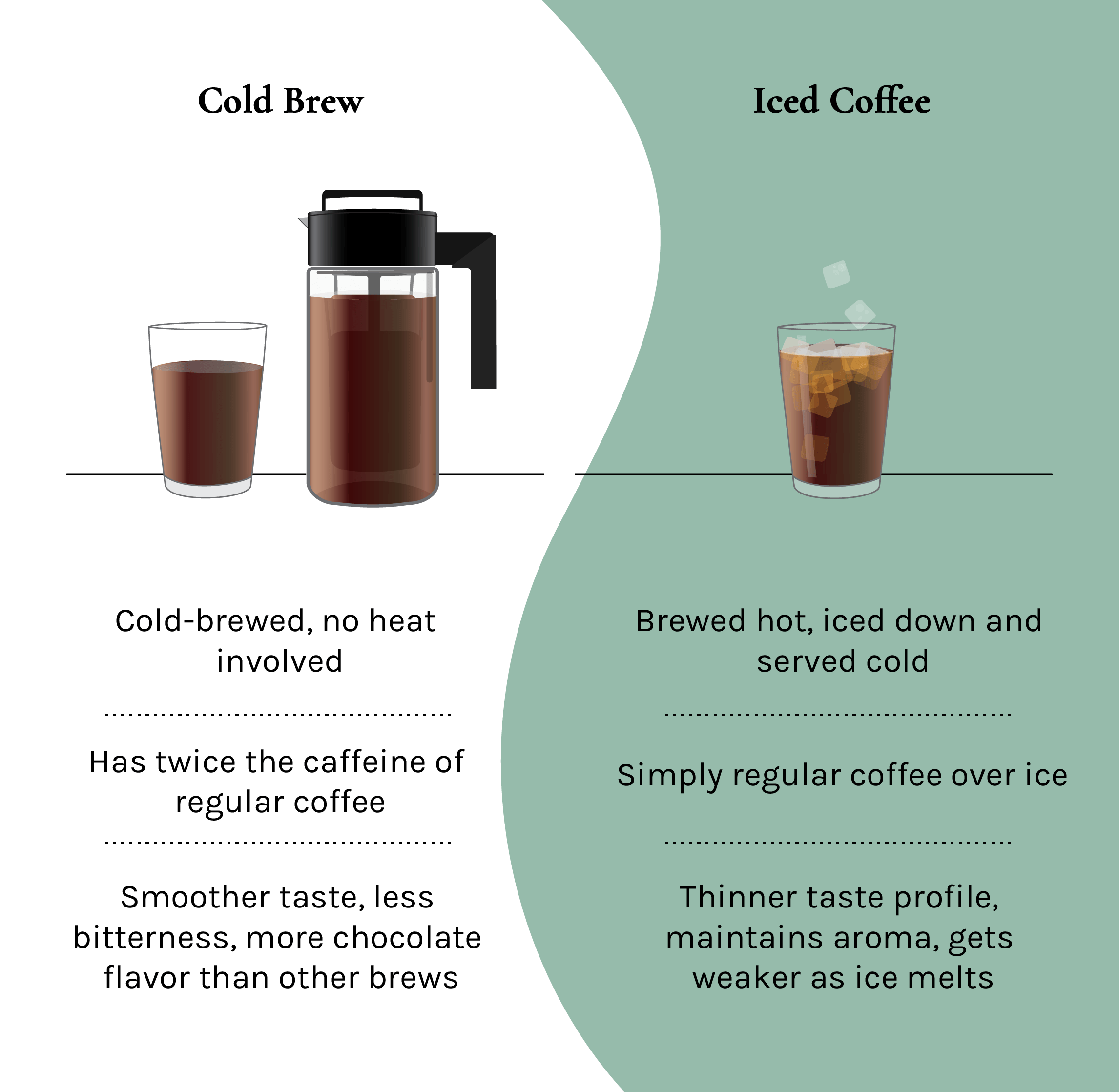
Cold Brew vs Iced Coffee Differences Explained Coffee Affection
Cold brew has more caffeine than espresso. This is because the coffee beans are steeped in cold water for a longer period of time, which allows for more caffeine to be extracted from the beans. An 8-ounce serving of cold brew coffee has 250mg of caffeine. A 1-ounce serving of espresso coffee has 68mg of caffeine.
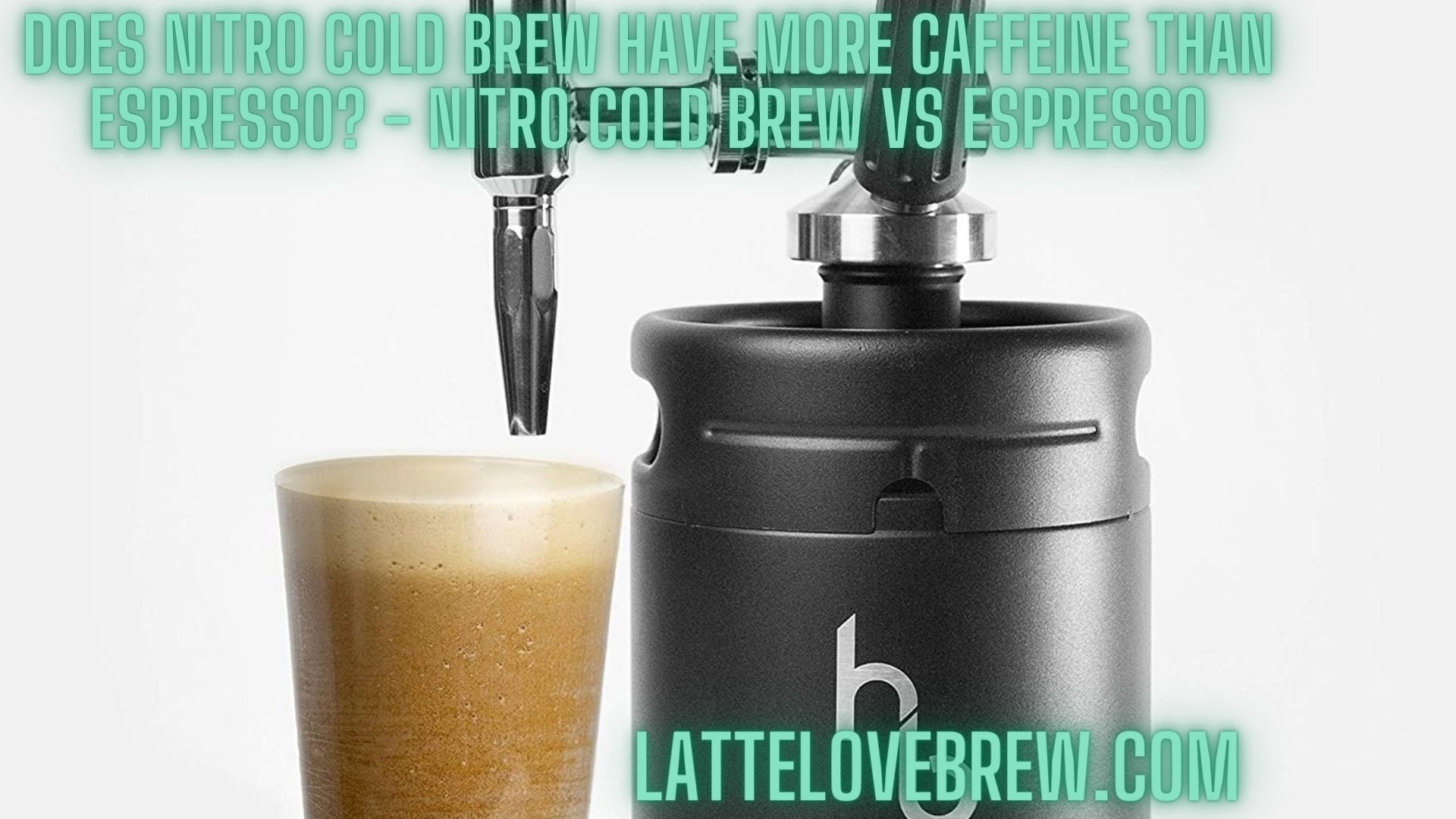
Does Nitro Cold Brew Have More Caffeine Than Espresso? Nitro Cold
When it comes to coffee, there are a multitude of brewing methods. Two popular methods are cold brew and espresso. While both produce a delicious cup of coffee, they are vastly different in terms of taste, brewing time, and caffeine content. Cold brew is made by steeping coarsely ground coffee in cold water for 12 to 24 hours. This slow and gentle brewing process results in a smooth and less.

Is Cold Brew Stronger Than Espresso? Differences Explained
Cold brew is the poet of the coffee world, whispering sweet nothings to your taste buds. Its flavor profile is characterized by gentle notes of chocolate, nuts, and a hint of fruitiness. The aroma is like a fragrant breeze on a warm summer day, inviting you to savor the moment. Espresso, on the other hand, is the rock star.

Cold Brew Vs. Espresso What's the Difference Carmela POP
Espresso is made with hot water and pressure, while cold brew is made with cold water. This means that espresso has a stronger flavor and a higher caffeine content than cold brew. Cold brew takes longer to brew than espresso, and requires a lower coffee to water ratio. The two types of coffee have different purposes.
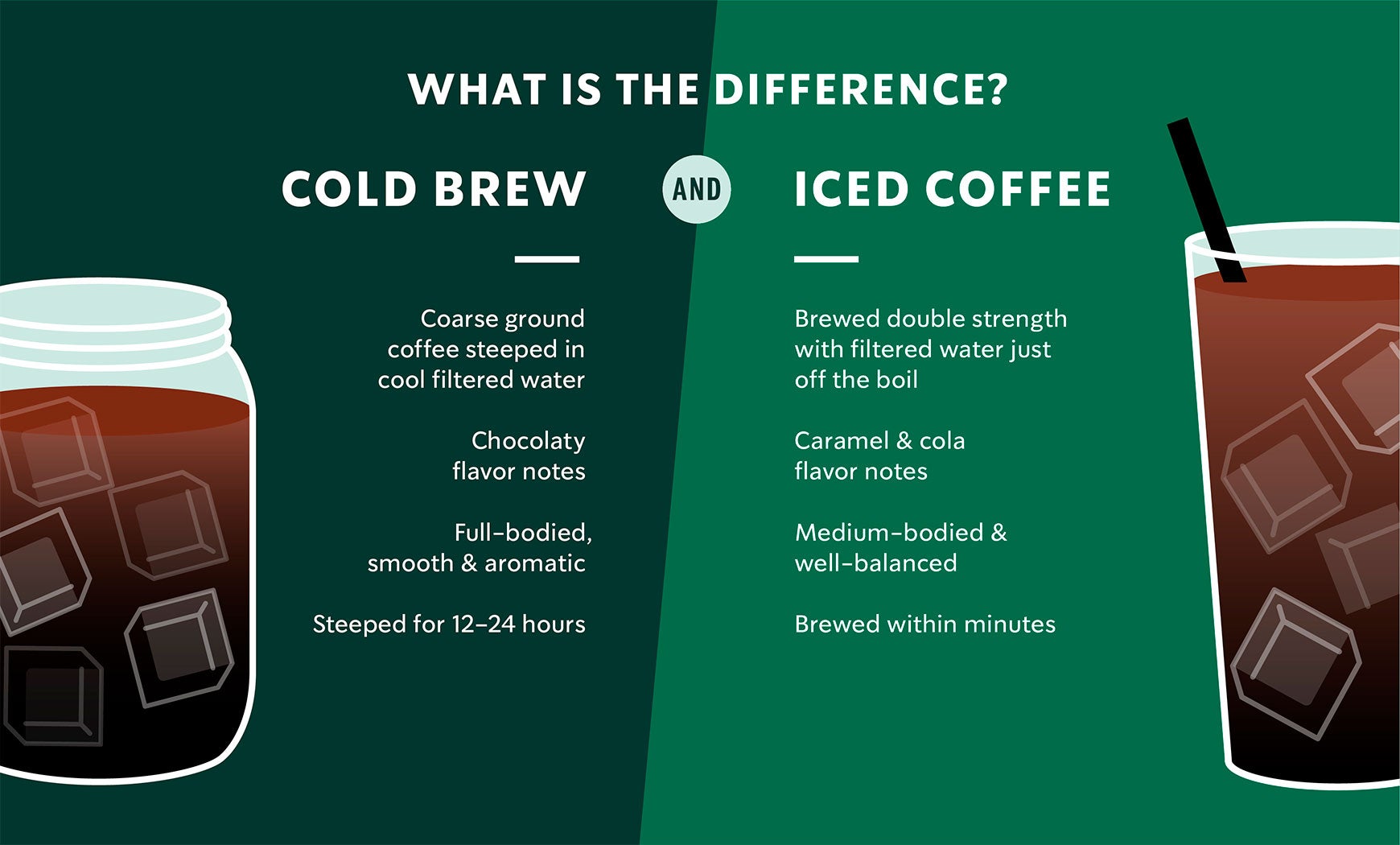
How Does Starbucks Make Iced Coffee? Vending Business Machine Pro Service
Cold brew is prepared with a higher coffee-to-water ratio of 1:8. Whereas regular coffee is prepared with a ratio of 1:25. Which means cold brew has a higher caffeine concentration. A 16 oz cold brew cup has almost 200 gm of caffeine. In comparison, one cup of espresso drink has 68 gm of caffeine.
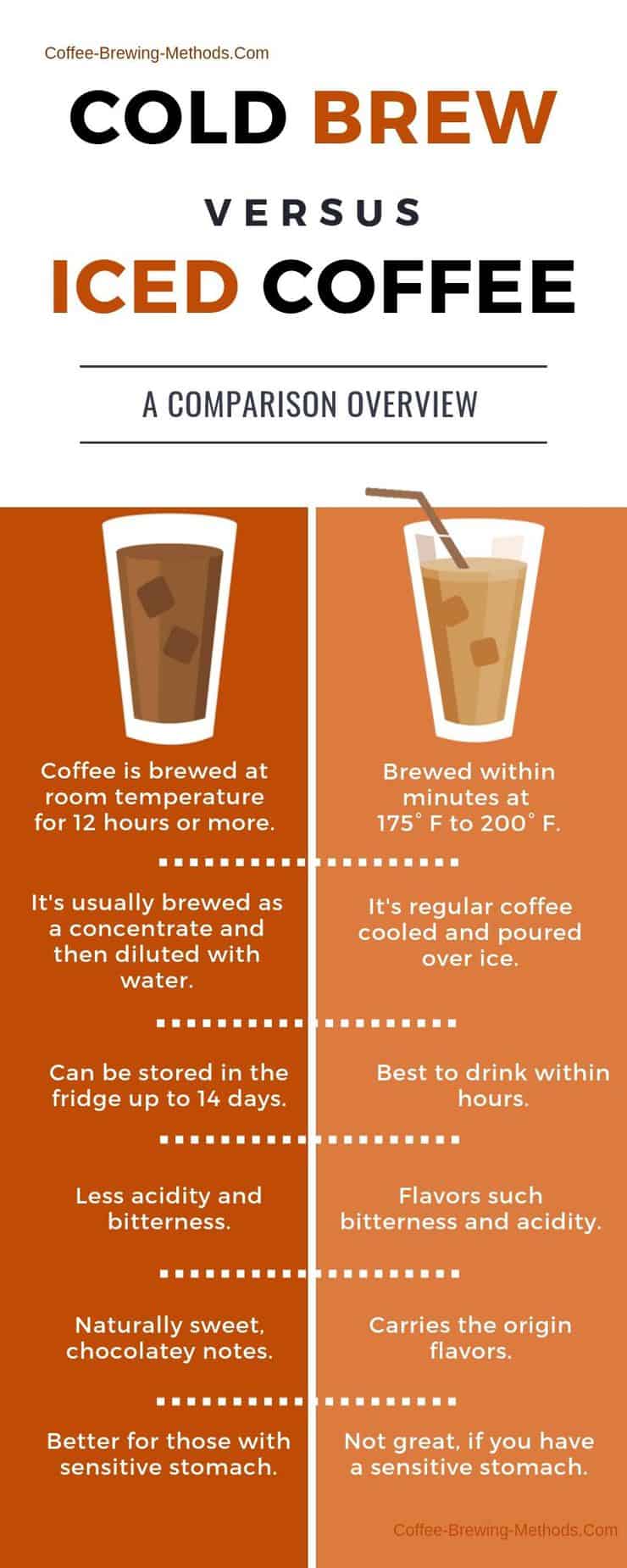
Cold Brew vs Iced Coffee Infographic Coffee Infographics
Cold Brew vs. Espresso: Taste. There are a lot of factors that can affect the taste of a cup of coffee. The amount of acidity undoubtedly plays the most prominent role as a more acidic cup tends to taste much more bitter. If you prefer a smoother, less acidic cup of coffee, then you might find a cold brew tastes much better than an espresso.

Iced Coffee vs. Iced Latte Get to Know All the Differences
Cold brew coffee and espresso are two very different methods of brewing coffee, which can result in different taste profiles. Cold brew is smoother, sweeter, and less acidic, while espresso is strong, rich, and full-bodied, with distinct flavor notes. Espresso is much thicker in consistency and has a smooth texture.

Cold Brew vs. Espresso All the Differences You Need to Know
While regular cold brew can only be drunk plain or with a splash of milk or creamer, cold brew concentrate can be used much like espresso. With cold brew concentrate, you can create lattes, americanos, iced coffees, cappuccinos, and the like. So while cold brew concentrate is brewed like a cold brew, it functions much as espresso does. 2.
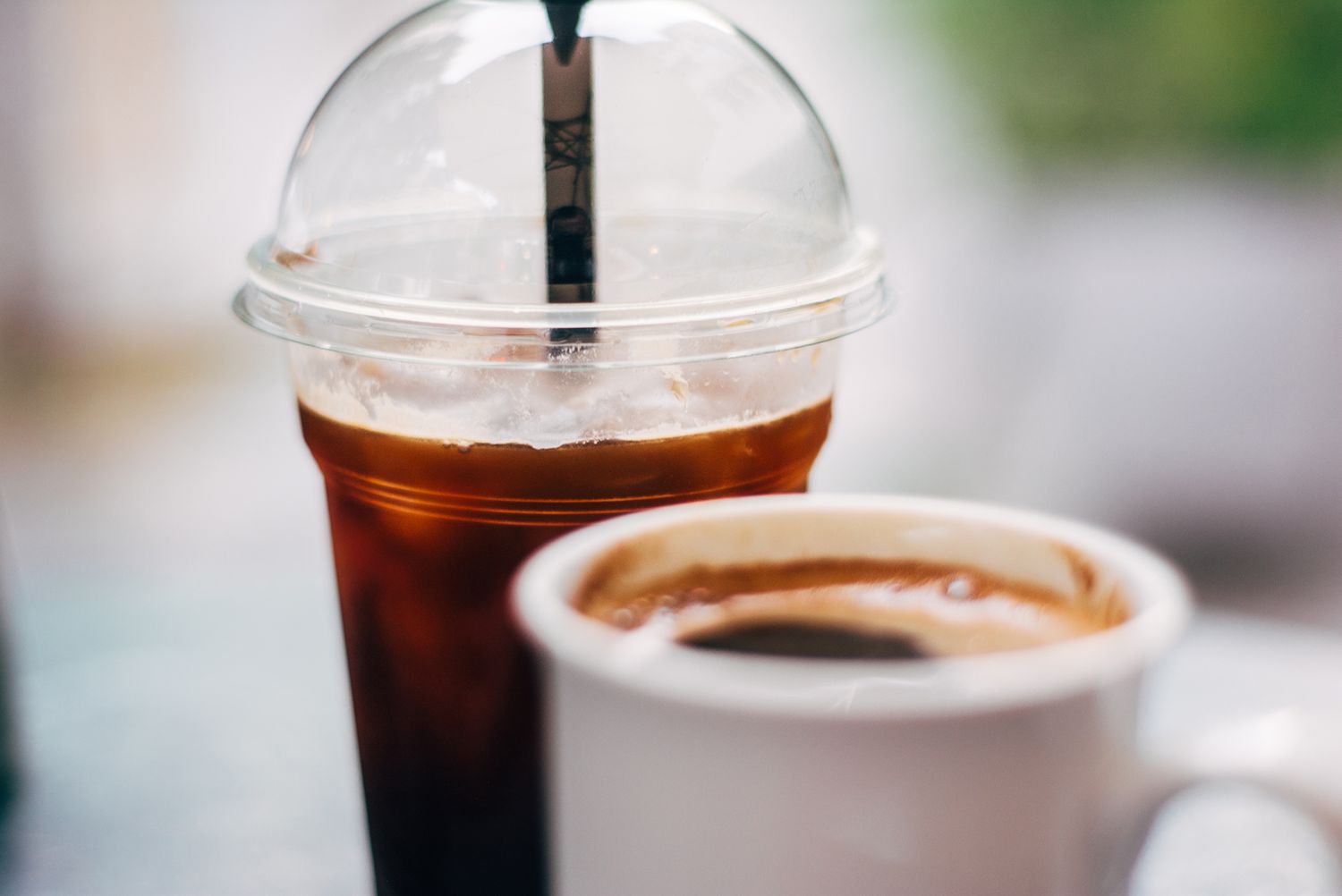
Cold Brew Vs Espresso All the Differences You Need to Know
Cold brew has a lower caffeine content compared to espresso, making it a better option for those looking to limit their intake. This difference in caffeine content is due to the brewing process. Cold brew is made by steeping coffee grounds in cold water for an extended period of time, usually around 12-24 hours.

Cold Brew vs. Espresso All the Differences You Need to Know
Cold brew and espresso have distinct differences in taste, preparation, and brewing techniques. Cold brew has a smoother and less acidic taste, while espresso is bold and intense. Cold brew typically contains more caffeine than espresso, but the serving size and brewing process can affect the caffeine levels. Defining Cold Brew and Espresso